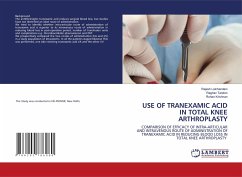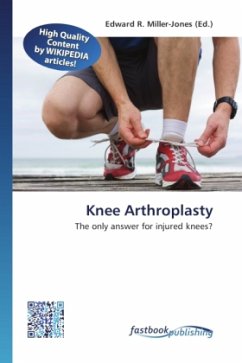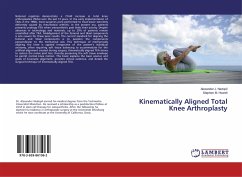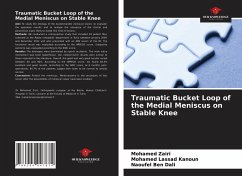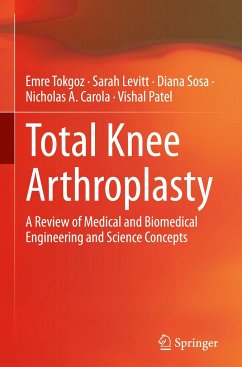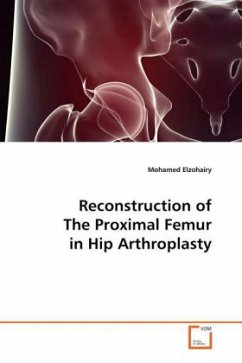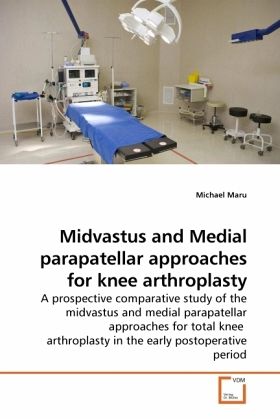
Midvastus and Medial parapatellar approaches for knee arthroplasty
A prospective comparative study of the midvastus and medial parapatellar approaches for total knee arthroplasty in the early postoperative period
Versandkostenfrei!
Versandfertig in 6-10 Tagen
32,99 €
inkl. MwSt.

PAYBACK Punkte
16 °P sammeln!
This is a prospective observational study of 77 patients undergoing primary total knee arthroplasty using medial parapatellar or midvastus approach (37 midvastus, 40 medial parapatellar). The prosthetic design and physical intervention was standardised in all the patents. The Oxford Knee Score, pain scale, knee flexion, unassisted straight leg raise, standing and walking were compared at 3rd, 5th and 7th day postoperatively. These parameters were checked again at 6 weeks and at 3 months following the operation. The mean age was 71 years (range 48 to 88). There were 44 women and 33 men. The mea...
This is a prospective observational study of 77 patients undergoing primary total knee arthroplasty using medial parapatellar or midvastus approach (37 midvastus, 40 medial parapatellar). The prosthetic design and physical intervention was standardised in all the patents. The Oxford Knee Score, pain scale, knee flexion, unassisted straight leg raise, standing and walking were compared at 3rd, 5th and 7th day postoperatively. These parameters were checked again at 6 weeks and at 3 months following the operation. The mean age was 71 years (range 48 to 88). There were 44 women and 33 men. The mean duration to achieving straight leg raise for the midvastus group was 3.5 days (SD±1.2) and for the medial parapatellar approach group was 5 days (SD±1.3) The mean hospital stay for the midvastus group was 5 days (SD±2.5) and for the medial parapatellar group was 6.5 days (SD±2.6). The difference between the two groups was statistically significant (p=0.003) There was a statistically significant difference in duration of hospita stay, straight leg raise and rising from a chair unassisted, all in favour of midvastus approach.




